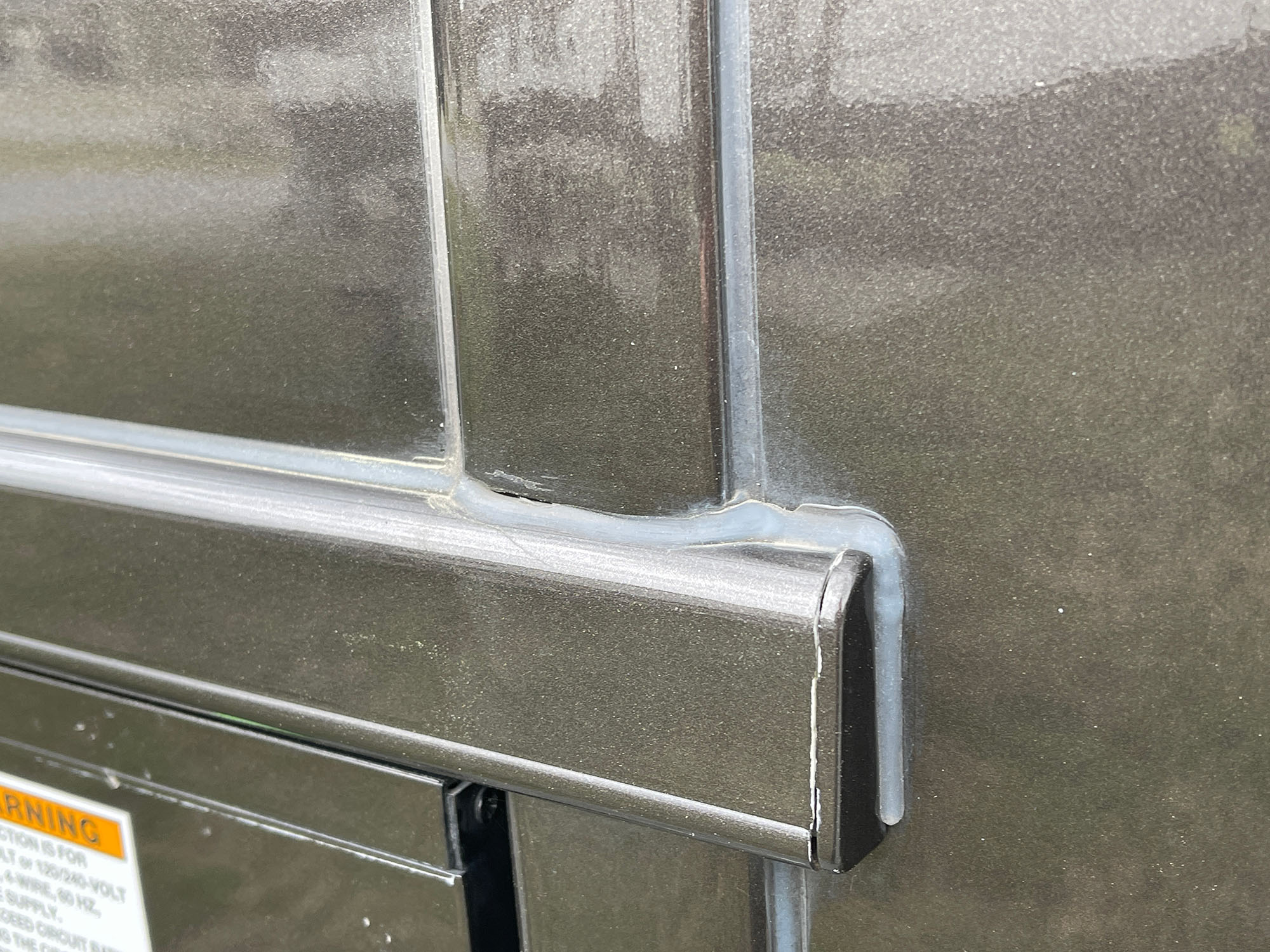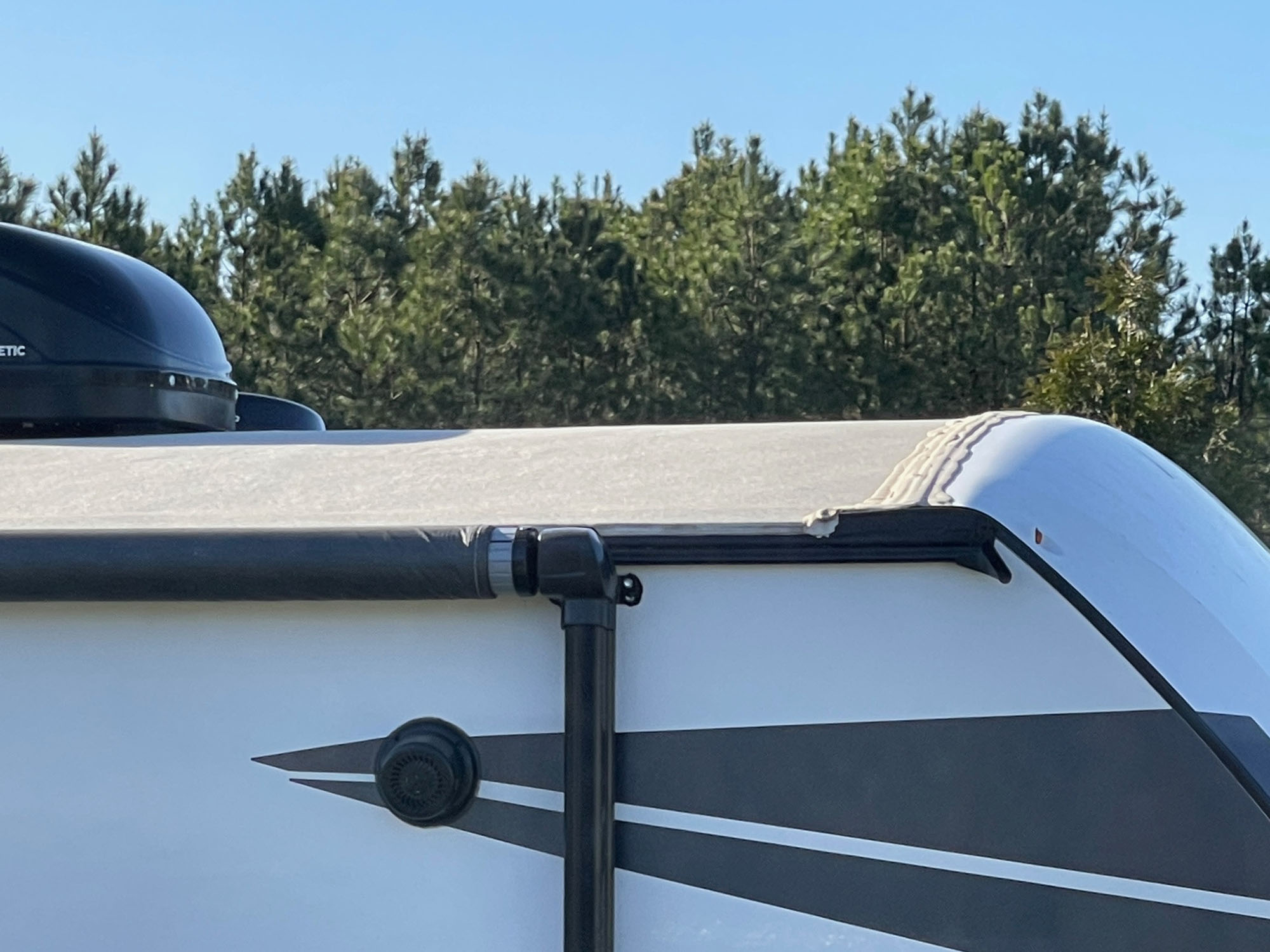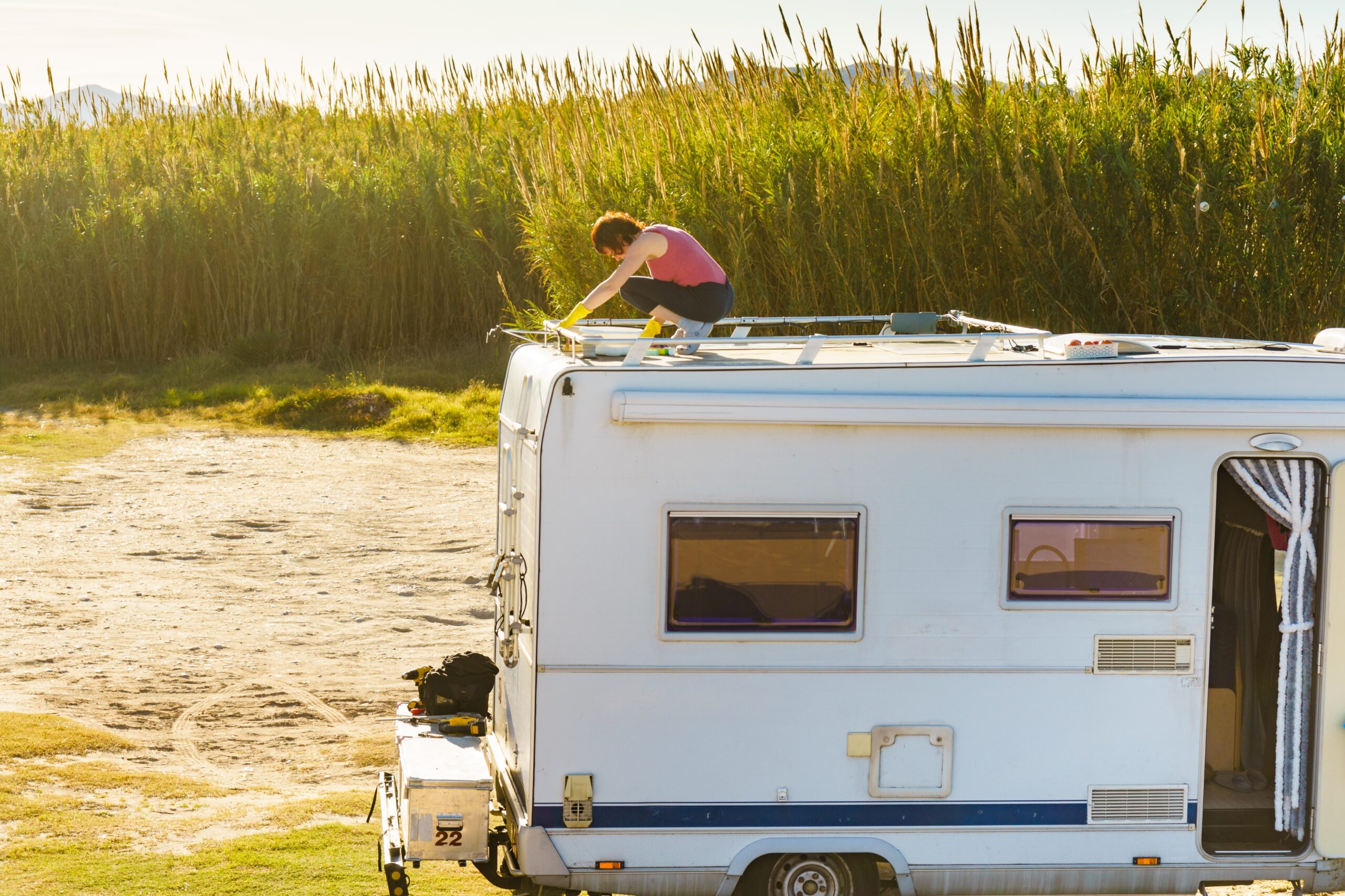Once you become an RVer, understanding how caulks ad sealants work is necessary for a well-maintained rig. But over the years I’ve learned that choosing the best RV caulk or sealant is not as simple as just picking one off the shelf and hoping for the best. There are so many different type of these products and applications for using them. The best way to understand how is to not buy anything until you first determine the needs of your sealing project. Once you know that, choosing the right product is whole lot easier.
Let’s go over each step of the process.
is RV caulk and RV sealant the same thing? And why do we need them?
RV caulk and sealant are two words you’ll hear a lot in regards to RV maintenance. But do they mean the same thing? In this Home Depot article we learn how to tell the difference:
“What is the difference between caulk and sealant?” is a question commonly asked. In fact, the terms “caulk” and “sealant” are often used interchangeably, since both are used to fill joints and seams. However, the biggest difference between caulk and sealant is elasticity.
Caulk is more rigid than sealants when dry. Sealants hold up better in spaces that are prone to a lot of expansion and contraction. For example, the best caulk for windows is usually a “sealant” instead of a true “caulk.” When choosing caulk vs. sealant for your project, decide based on how much stress there might be on the sealed area.
Types of Caulks and Sealants, The Home Depot
Generally speaking, RVers use caulk and sealant to mean the same thing. We talk about “caulking” to take care of our rigs, both indoors and outdoors. We caulk to seal cracks, holes, seams, screw heads, windows, doors, counter tops, sinks, shower inserts, and skylights. And we lay it down on other places where water, ants, or other pesky invaders can enter the RV.
Most RV caulk and sealant serves a maintenance function, but some applications are also cosmetic. A good example is to caulk around your countertops and shower.
To keep our RVs well-maintained, it’s important to inspect and repair any previously caulked and sealed areas that may be showing signs of wear or degradation. RVs are often exposed to weather extremes, and this can cause RV sealant to break down. Excess heat, direct sunlight, rain, snow, and freezing temperatures, all have a negative impact on how well the RV sealant continues to provide an impenetrable seal.

How to spot leaky RV seals
Seal deterioration may first be seen on roof edges and seams, around plumbing and air vents, skylights, and air conditioners. Or you might notice the sealant pulling away along your basement doors, around the water heater housing, or on the refrigerator access panel.
As caulk breaks down, water may begin to seep in under the old caulk and enter the sub-surfaces between the outer and inner walls of the RV. If a leak continues long enough, water may even start to damage the structural integrity of the roof material, walls, or floor of the RV. This is no small problem. Just type the words “water leak” into the search bar of the iRV2.com forum and you’ll get over 42,000 search results!
Rain water is leaking inside our RV from the crank up antenna handle. When I pull down the dial to rotate the antenna there is play (the dial moves back and forth). Is there a diagram anywhere that shows what’s inside the mounting bracket?
Water Leaking Inside at Crank Up Antenna Handle, @Raasco, iRV2 Discussion Forums
The stories of water damage in an RV are disheartening and ubiquitous. Many of these leaks lead to extensive repairs and, in some cases, even create health hazards. An undetected leak will eventually promote the growth of mold or mildew and possibly even dry rot.
The bottom line: fixing water damage in an RV is more costly and much more difficult than just maintaining good seals on your RV. Here’s how you can avoid letting it get that far.
Your RV Use Determines Your Re-caulking Schedule
In conducting research for this article, I read about one RV owner who recaulks his RV twice a year. Personally, I thought that might be overkill, but it raised a question in my mind.
What recaulking schedule is appropriate for an RV?
If you’re only using your RV a few times every summer and the rest of the time it’s in an enclosed or covered storage space, the wear and tear on the caulk is less than if you’re a full-time RVer.
With full-time RV use, every minute of every day your RV is exposed to some deteriorating weather condition. UV rays, rain, or freezing temperatures all damage seals. Additionally, all the flexing and movement of your RV’s joints and seams while traveling could eventually cause the caulk to pull away from the surfaces to which it is affixed.
The more RV driving you do with your RV, the sooner the caulk will need to be replaced.
Even if you don’t think recaulking twice a year is appropriate, at least a cursory inspection of all the joints and seals every six months might be prudent. Is one seal starting to break down? Were all the caulking on your RV’s exterior was done at the same time? Then it’s reasonable to assume that other joints and seals might also need to be replaced.

It’s beyond the scope of this article to list all the different brands of RV caulk and sealant. For the purpose of this article, however, it’s better to describe the different types of RV caulks and sealants. Let’s also discuss what you should be aware of when shopping for a solution to a particular RV caulking problem.
Materials, Purpose, and Location Determine how to Caulk your RV
RVs are built of various materials. Those variables are a critical consideration in the type of caulk or sealant you’ll need for any project.
The location where you need to caulk, (indoors or outdoors, on the roof, sidewalls, or under the RV) must be considered when shopping for the best RV caulk or sealant.
Some RVs have rubber roofs which require caulk all along the edge of the roof where the rubber meets the side walls. An unbroken seal along the edges of the roof and around every roof penetration is critical to keep your RV leak-free.
- Pay attention to the seals around the skylight, bathroom and galley fans, refrigerator vent cover, air conditioners, TV antennae, etc..
Some RV roofs and sidewalls are made of aluminum, or fiberglass and others have a gelcoat coating as an exterior protective finish. Since these building materials are all different, some caulks are better than others.
- One caulk type may bond more easily to a rubber roof while others simple won’t work well on a rubber roof.
Additionally, some types of caulk adhere better to gel coat or aluminum surfaces, than others. On the other hand, sealing the aluminum shower door frame to the plastic shower insert is a completely different project than sealing a rubber roof. These two projects will require different caulks.
Knowing where you need to caulk and what type of material you need the sealant to adhere to, should be your first consideration when looking for the best RV caulk.
Once you pinpoint the location and materials for joining, it’s time to choose the right RV caulk. It comes in a variety of types and each pros, cons, and best application.

RV Caulk comes in different categories for different projects
- Acrylic (also called painters caulk)
- Vinyl, silicone
- Adhesive caulk
- Caulking tape
Each caulk or sealant has unique properties that should inform your decision about which one to use in any specific application. For instance:
- Need to caulk exterior surfaces? Then UV resistance and possible the stretchy or flexible attribute will be important.
- Working indoors on countertops, or around plumbing features like vent pipes? You’ll want to avoid caulk with toxic off-gassing fumes.
- Does your RV roof need a quick fix on the road? Caulk with a fast dry-time might be the most critical factor for you. But if you’re working on a roof, then self-leveling caulk might do the job better than any other type.
- Vertical surfaces and horizontal ones also affect product choice.
Try a few different RV caulk and sealant types and you’ll probably develop your own personal product preferences. But until then, you’ll need to read the labels, descriptions, and brands to determine which is best for your needs.
Different Attributes of RV Caulk and Sealants
Whether they are acrylic, vinyl, adhesive, or a silicone sealant, here’s what you can expect in different products:
- the RV sealant stays flexible when dry
- silicone caulk becomes rigid when dry
- some caulks work better on rubber than others
- there are caulks best suited for indoor applications, and some for outdoor
- certain caulks release toxic off-gassing during and after application
- you can buy self-leveling caulks that are better for horizontal surfaces and more “spreadable” to do by hand
- or you can get non-leveling lap sealants that don’t run on vertical surfaces
- some caulks and sealants are UV-resistant
- others are water resistant
- some products won’t crack or yellow
- different caulks and sealants can be over painted
- some are messier than others, requiring more clean-up and removal
- there are fast drying sealants and caulks
- and certain caulks and sealants can take a few days to dry depending on conditions
The one caulk attribute that’s critical for any RV project is water resistance. Keeping an RV watertight is the primary reason anyone needs caulk in the first place.
The backsplash of kitchen and bathroom countertops caulking is basically just cosmetic. But even in this cosmetic application, you wouldn’t want the caulk to break down when it gets wet. I can’t think of any caulking situation where water resistance would not be a key component of an RV caulk’s functionality.
bottom line: The Best RV Caulk depends on the project
The bottom line: there isn’t a single RV caulk or sealant product that can be identified as the best RV caulk. It really depends on:
- what you need to seal
- where you will use the caulk
- what materials you are affixing the caulk to
- how long you have to let it cure
- and what level of expertise you have to do this work.
If it’s your first-time caulking anything I suggest not using one of the extremely viscous caulks and sealants. Stay away from the ones with the added adhesive. Avoid the ones that tend to be messier, because the project will be hard enough without the challenges created by the caulk itself.
It takes time and practice to become proficient at caulking anything. Give yourself a break. Use an RV caulk or sealant that has been designed to make the project a little less stressful.
RVer tips for the best caulks and sealants
Manufacturers of the best RV caulk and sealants that people often refer to include: Geocel, Gorilla, and Dicor. These are the three brand names that repeatedly showed up on other people’s lists of the best RV sealant.
As for how I choose the right caulk and sealants, I look for water resistance, UV resistance, self-leveling, no noxious odor, fast drying, and pliable. You still need to analyze your own project to determine the best RV caulk or sealant for your RV sealing project.

